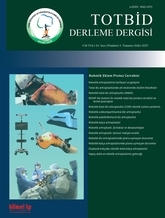
Unicompartmental knee arthroplasty (UKA) is a minimally invasive surgical procedure designed to replace only a portion of the knee joint. This method aims to alleviate pain and restore joint function in patients with isolated osteoarthritis, osteonecrosis, or significant cartilage damage in localized areas of the knee. Developed in the 1970s, UKA has gained widespread application due to the modern designs available today. However, UKA is a more technically demanding and precise procedure compared to other prosthetic surgeries. Utilizing standard operative techniques, unicompartmental knee arthroplasty can result in incorrect implantations in up to 30% of cases. The advent of robot-assisted techniques developed for UKA has improved implant placements, thus reducing revision rates and increasing survival expectations. These techniques have shown meaningful contributions to early functional outcomes. The cost differences generated by new technologies translate into advantages through reduced postoperative pain, shortened hospital stays, and lower complication rates.